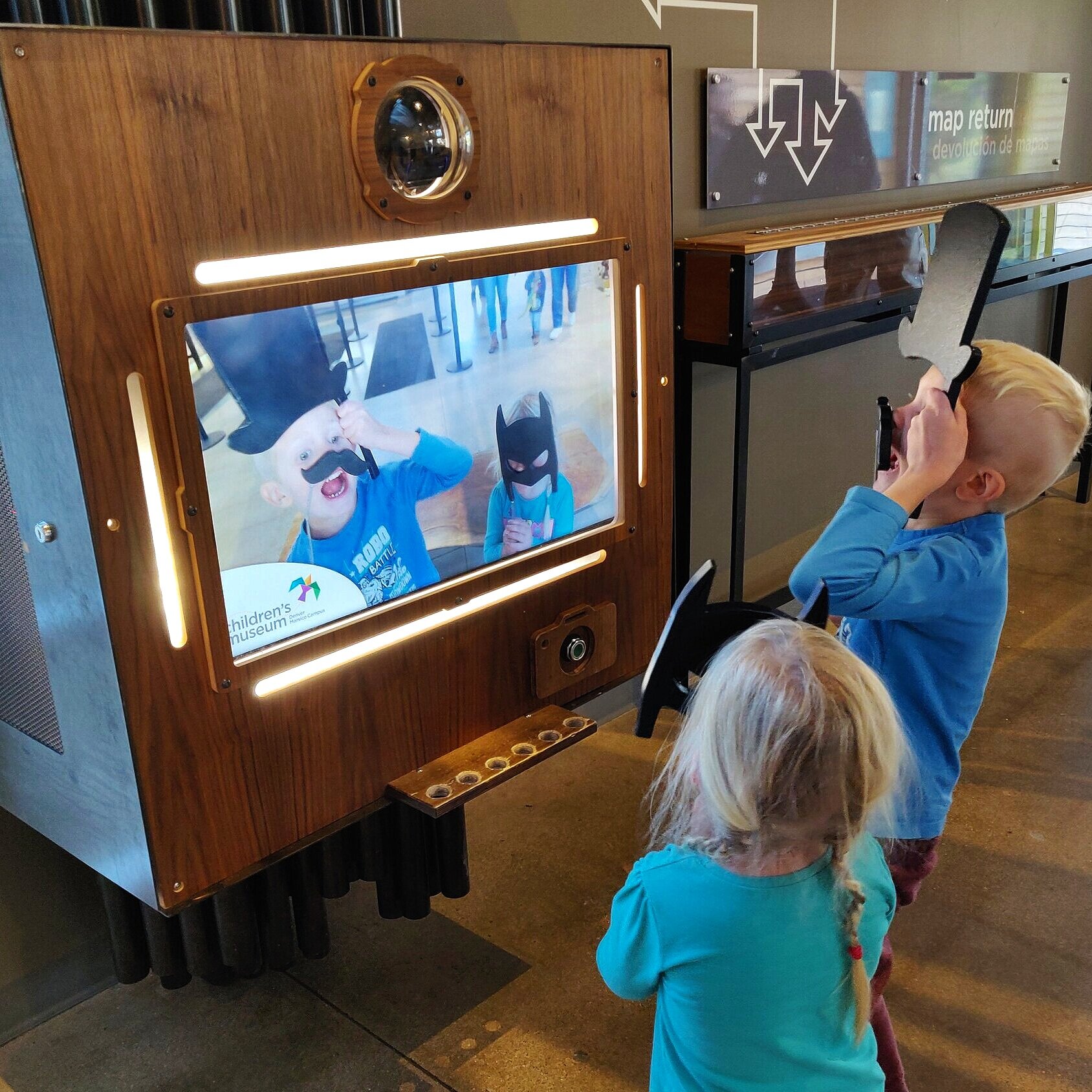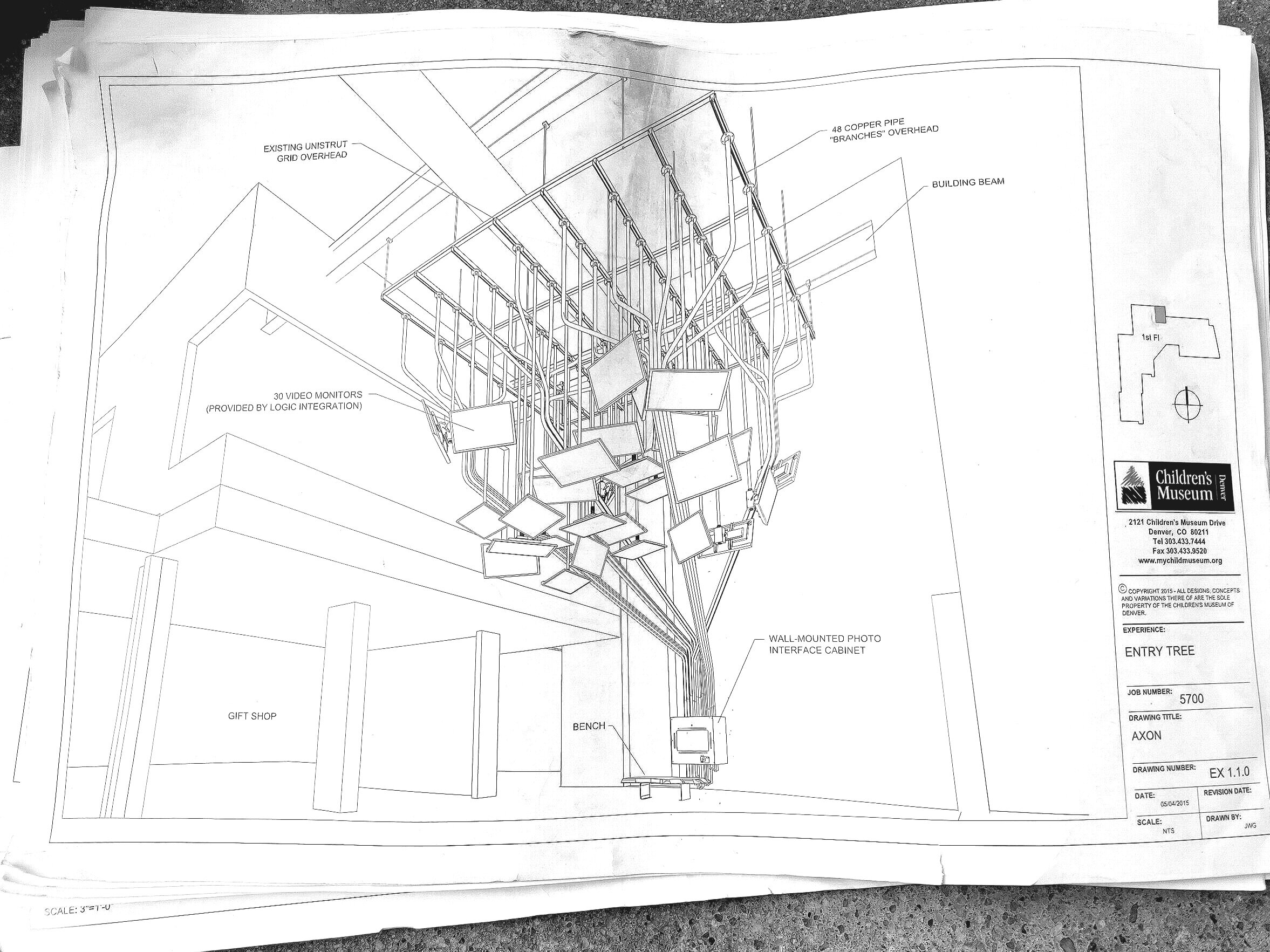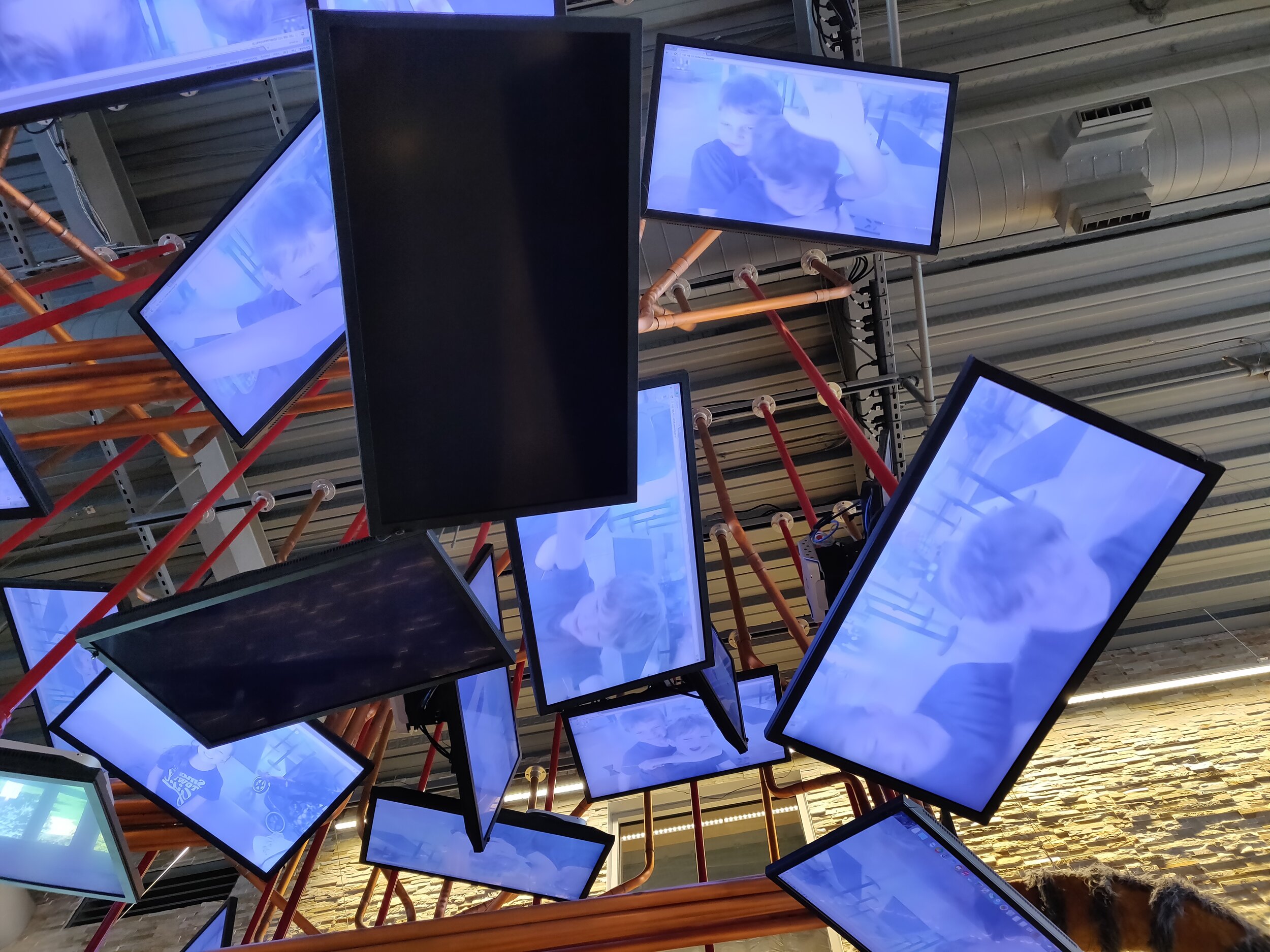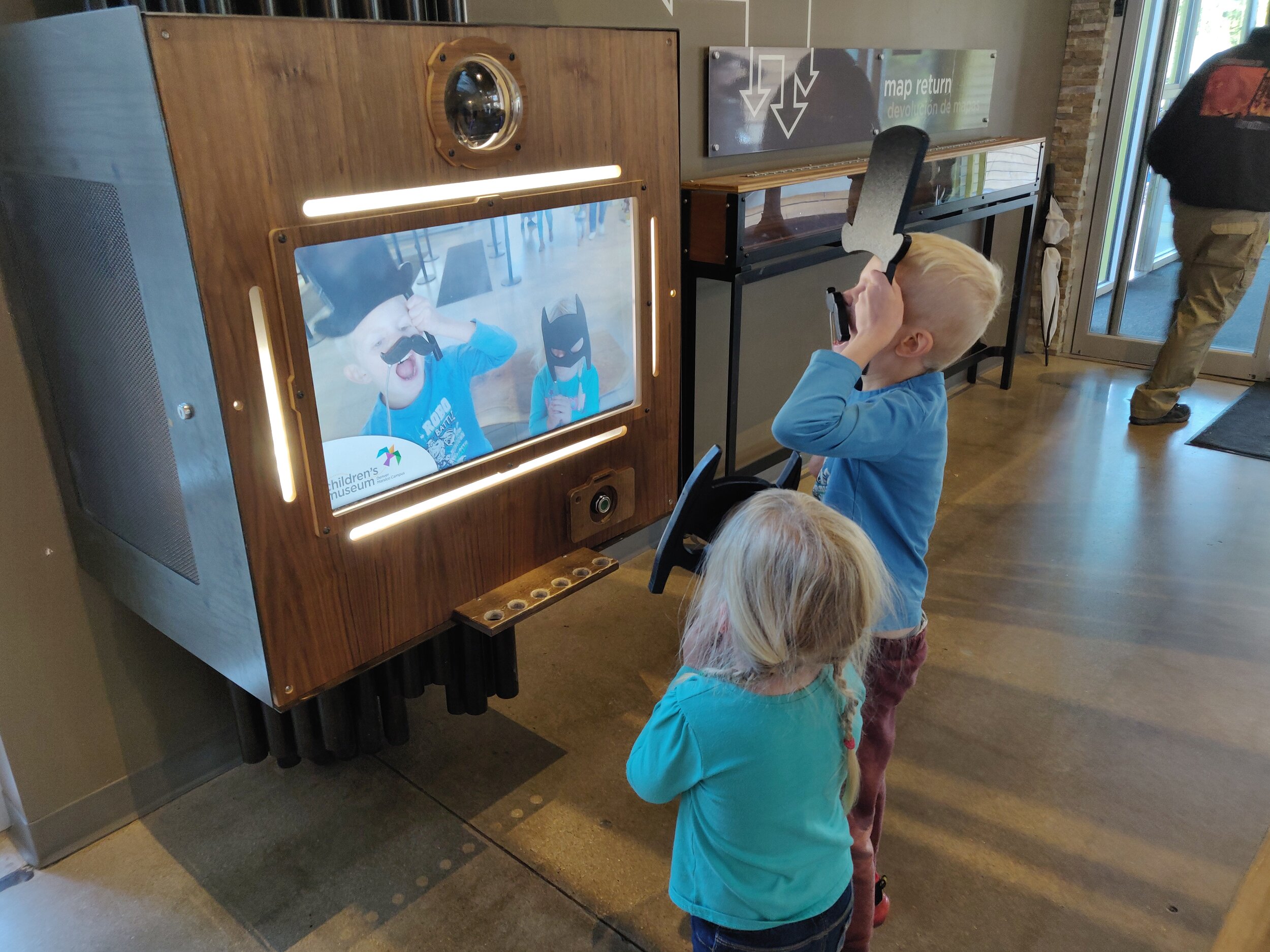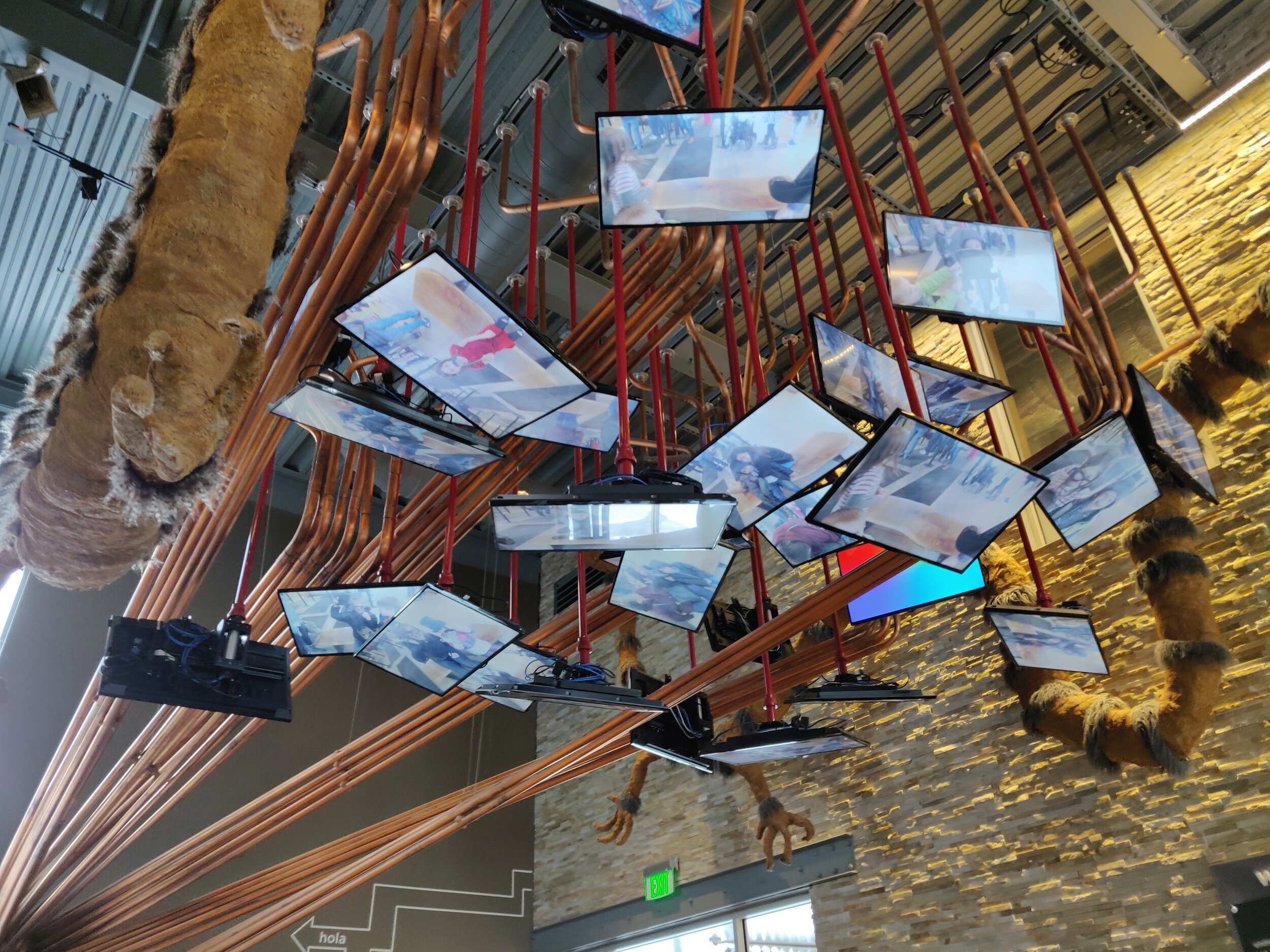Children’s Museum of Denver Entry Tree Renovation
This project is a great example of a project we can do because of our diverse skill set. The skills required to complete a project of this type include audio visual (AV), computer networking, software development, hardware configuration, hardware installation, graphic design, animation and math.
3 … 2 … 1 … FLASH!
The Entry Tree welcomes you to the museum with the smiling faces of visitors on 30 digital “leaves” hanging overhead. Sit on the bench, press the button, and 3-2-1-flash, your photo instantly joins the other smiling faces above!
Bikeshop Agency did a complete renovation of the software and hardware that gives the “Entry Tree” life.
“The team is willing to dream with you new ideas and think up novel solutions to unusual projects. The Bikeshop Agency’s execution and drive follow through to the end of the project.”
Project Summary
In mid-2019, Bikeshop Agency worked with Chris Van Dyken at the Children’s Museum of Denver to renovate the Entry Tree — part sculpture, part interactive welcome mat.
After 5 years of operation, the screens had become dim, the colors were off and the Mac Mini’s were at risk of hardware failure. The system had become unreliable and required maintenance almost weekly.
The original plan was to replace the failing Mac Mini’s and update the software, but after further assessment we determined that the screens would also need to be replaced. After roughly 10 weeks of development the completed renovation consisted of writing all new software and installing 32 TV’s and 33 computers!
For the foundation of the new system we used digital signage software. Digital signage software reports the status of all the screens, and allows museum staff to schedule the TVs to turn on and off automatically. This software makes it possible for the Entry Tree screens to display other media, such as photos or videos, during special off-hours events.
Throughout the development of the new Entry Tree software, Bikeshop Agency met weekly with Chris Van Dyken of the Children’s Museum of Denver to report progress, make decisions, and demonstrate new functionality.
Bikeshop Agency worked together with museum staff to complete the renovation in a single night, making it possible for the museum to run as usual the following morning.
Before and After
Exhibit description
In the entry of the museum, visitors are welcomed by the smiling faces of children displayed on the “leaves” hanging from large copper pipes (branches) overhead. As they walk in to the museum, visitors can take their own “selfie” which is instantly added to one of the screens overhead.
As new pictures are added, the photos advance from screen to screen. The screens are 32” flat-panel high definition TVs attached to pipe “branches,” mounted to a steel lattice on the ceiling. The brains of the operation, the network and server, are housed in a server rack behind the selfie screen making up the “trunk” of the Entry Tree.
A history of outages and time consuming maintenance
After nearly five years of operation, the 31 Mac Mini’s which powered the leaves began to fail and the system required maintenance on a near-weekly basis. To make configuration changes or reboot computers, museum staff were required to take over the selfie computer screen and constantly dismiss application windows that were automatically reloaded every few minutes.
The TV screens overhead, which had never been turned off, had become dim and the colors faded.
In the case of a power outage, museum staff would have to use a ladder to turn the TVs on and restart all 30 computers.
Renovation requirements
The purpose of the renovation was to replace aged computers and update the system to require less maintenance. We identified these goals:
Components should be inexpensive and easy to repair or replace.
The system should restart automatically requiring little or no staff intervention.
TV Screens should turn on and off on a schedule to decrease wear and tear.
Museum staff can easily configure the Entry Tree for special events.
To reduce the risk of being compromised the system must be “air gapped,” which means that it is not connected to any other network. This detail had a significant impact on how the system was designed and configured.
Technical approach
We chose to use Raspberry Pi computers (33 of them!) for our entire system because they are well supported and very inexpensive ($45.00 each compared with the $700 to $800 for the cost of a Mac Mini).
Each “leaf” and the “selfie” Raspberry Pi is running digital signage software. The software provides many benefits, such as remote management of each screen and scheduling to automatically turn the TVs on and off.
A single Raspberry Pi acts as the server, taking in new photos and distributing them to the 30 leaves overhead. The server runs digital signage software for scheduling the screens to turn on and off. All of the configuration can be done through a web browser; for convenience, a laptop has been installed in the server rack on a slide-out tray.
Reducing downtime
Raspberry Pi computers are inexpensive and the hardware or software can be quickly swapped with a backup. In case of a catastrophic failure of the server, the entire server hard drive can be swapped out with a backup in a few minutes.
Documenting everything
Creating a system that is reliable and easy to maintain in reality is VERY difficult. Once a project is completed it’s impossible to recall every detail, which makes debugging issues or making improvements 12 or 20 months in the future very difficult. It would also be very difficult to pass off the project to a new team of developers.
Throughout development we documented every program installed and every configuration made to the software system, the resulting documentation is over 20 pages long (with a table of contents, of course). We’re hopeful that this will provide a road map in the future.

